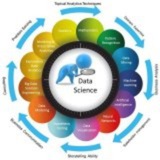💡 Python: Simple K-Means Clustering Project
K-Means is a popular unsupervised machine learning algorithm used to partition
Code explanation: This script loads the Iris dataset, scales its features using
#Python #MachineLearning #KMeans #Clustering #DataScience
━━━━━━━━━━━━━━━
By: @DataScienceM ✨
K-Means is a popular unsupervised machine learning algorithm used to partition
n observations into k clusters, where each observation belongs to the cluster with the nearest mean (centroid). This simple project demonstrates K-Means on the classic Iris dataset using scikit-learn to group similar flower species based on their measurements.import matplotlib.pyplot as plt
from sklearn.datasets import load_iris
from sklearn.cluster import KMeans
from sklearn.preprocessing import StandardScaler
import numpy as np
# 1. Load the Iris dataset
iris = load_iris()
X = iris.data # Features (sepal length, sepal width, petal length, petal width)
y = iris.target # True labels (0, 1, 2 for different species) - not used by KMeans
# 2. (Optional but recommended) Scale the features
# K-Means is sensitive to the scale of features
scaler = StandardScaler()
X_scaled = scaler.fit_transform(X)
# 3. Define and train the K-Means model
# We know there are 3 species in Iris, so we set n_clusters=3
kmeans = KMeans(n_clusters=3, random_state=42, n_init=10) # n_init is important for robust results
kmeans.fit(X_scaled)
# 4. Get the cluster assignments for each data point
labels = kmeans.labels_
# 5. Get the coordinates of the cluster centroids
centroids = kmeans.cluster_centers_
# 6. Visualize the clusters (using first two features for simplicity)
plt.figure(figsize=(8, 6))
# Plot each cluster
colors = ['red', 'green', 'blue']
for i in range(3):
plt.scatter(X_scaled[labels == i, 0], X_scaled[labels == i, 1],
s=50, c=colors[i], label=f'Cluster {i+1}', alpha=0.7)
# Plot the centroids
plt.scatter(centroids[:, 0], centroids[:, 1],
s=200, marker='X', c='black', label='Centroids', edgecolor='white')
plt.title('K-Means Clustering on Iris Dataset (Scaled Features)')
plt.xlabel('Scaled Sepal Length')
plt.ylabel('Scaled Sepal Width')
plt.legend()
plt.grid(True)
plt.show()
# You can also compare with true labels (for evaluation, not part of clustering process itself)
# print("True labels:", y)
# print("K-Means labels:", labels)
Code explanation: This script loads the Iris dataset, scales its features using
StandardScaler, and then applies KMeans to group the data into 3 clusters. It visualizes the resulting clusters and their centroids using a scatter plot with the first two scaled features.#Python #MachineLearning #KMeans #Clustering #DataScience
━━━━━━━━━━━━━━━
By: @DataScienceM ✨
🤖🧠 Reflex: Build Full-Stack Web Apps in Pure Python — Fast, Flexible and Powerful
🗓️ 29 Oct 2025
📚 AI News & Trends
Building modern web applications has traditionally required mastering multiple languages and frameworks from JavaScript for the frontend to Python, Java or Node.js for the backend. For many developers, switching between different technologies can slow down productivity and increase complexity. Reflex eliminates that problem. It is an innovative open-source full-stack web framework that allows developers to ...
#Reflex #FullStack #WebDevelopment #Python #OpenSource #WebApps
🗓️ 29 Oct 2025
📚 AI News & Trends
Building modern web applications has traditionally required mastering multiple languages and frameworks from JavaScript for the frontend to Python, Java or Node.js for the backend. For many developers, switching between different technologies can slow down productivity and increase complexity. Reflex eliminates that problem. It is an innovative open-source full-stack web framework that allows developers to ...
#Reflex #FullStack #WebDevelopment #Python #OpenSource #WebApps
